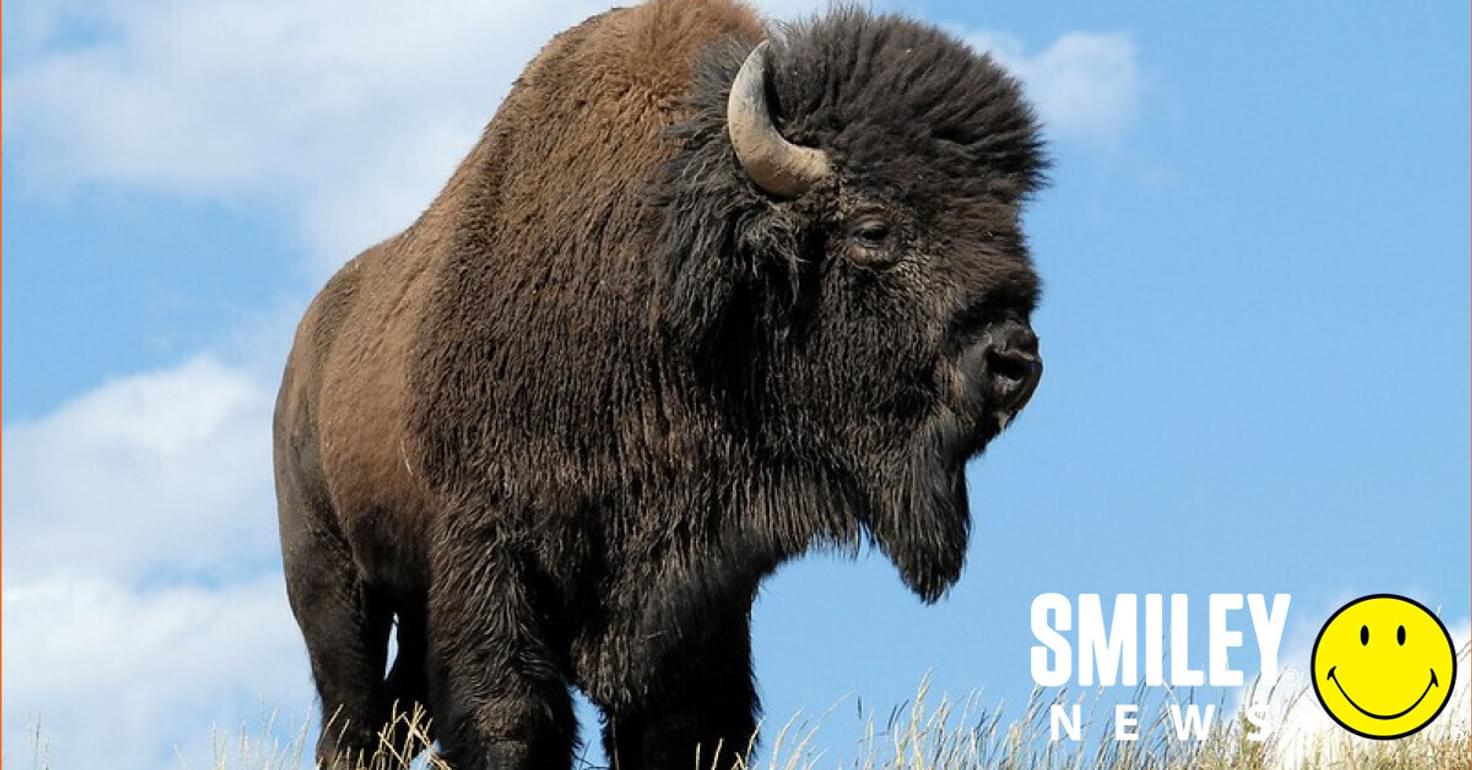
Words by Smiley Team
Bison remain firmly outside an endangerment threshold in the US, but entire regions where the animal – acting as a keystone species – helps prop up the ecosystem are missing them. With that in mind, there have been efforts around the continent to reintroduce herds to the wild.
One area is Banff National Park in Canada where 10 female and 6 male bison were moved from Elk Island National Park in 2017.
Over the past five years, that small herd of 16 bison has blossomed to over 85 after 16 bison calves were born in the spring.
[Sign up here to receive a weekly dose of positive news in your inbox]
“They've been incredibly healthy and they're faring really well in their new habitat,” said Saundi Stevens, resource management officer for Banff National Park.
The herd sits in a 1,200 square kilometer re-introduction zone serving as a testing ground for reintroducing bison to the area on a larger scale.
In the Banff National Park area, bison didn’t roam in the massive herds that were common on the plains, but even in low numbers, they helped shape ecosystems.
They alter landscapes in ways that benefit many other plants and animals. For example, bison fur provides insulation for bird nests, bison grazing creates a habitat for elk, and they provide a rich source of nutrients for scavengers, bears, and wolves.
Most of the bison have remained within the re-introduction zone, but as the herd grows more bison have been found outside in wider Alberta.
DONATE: The National Wildlife Federation has a bison restoration fund. Consider donating if you want to help support an organization aiding bison.
SUPPORT: Research what it means to be a keystone species and how you can help support the ones around you.